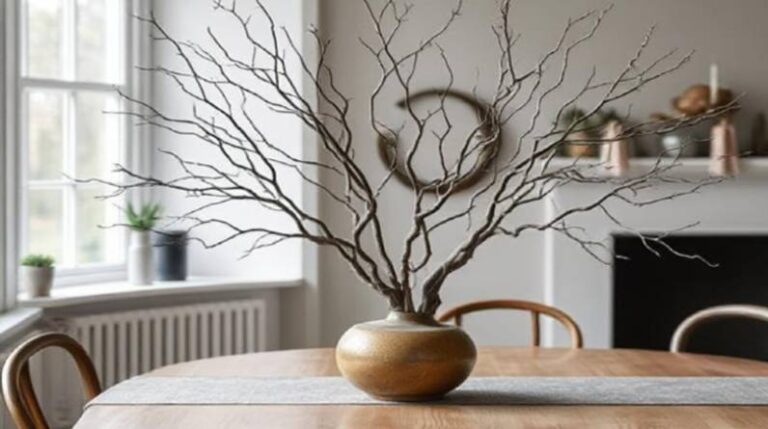Pyntekvister, translating to “decorative branches” in Norwegian, have moved far beyond their Nordic origins to become a global symbol of sustainable design, creativity, and mindfulness. These simple yet elegant branches, whether natural, painted, or sculptural, offer a connection to nature and cultural heritage that is increasingly relevant in modern lifestyles. In this guide, we explore the history, practical applications, and innovative ways to embrace pyntekvister in your life.
Understanding Pyntekvister and Their Cultural Roots
Pyntekvister are more than ornamental branches—they are a living testament to centuries of Nordic tradition. Historically, Scandinavian cultures used specific branches in rituals to symbolize growth, resilience, or protection. For example:
- Birch branches represented purification.
- Willow branches symbolized resilience.
- Evergreens conveyed eternal life.
These symbolic meanings added depth to decorative practices, connecting homes to seasonal changes and the rhythms of nature. Today, this heritage enhances the aesthetic and emotional value of pyntekvister in contemporary interiors.
Why Pyntekvister Are Trending in Modern Design
The resurgence of pyntekvister aligns perfectly with modern design trends that emphasize biophilic design, minimalism, and sustainability. Pyntekvister can bring natural elements indoors to improve mental well-being, complement clean lines and uncluttered spaces, and provide an eco-friendly decoration option. A 2025 interior design survey showed that 63% of Scandinavian-inspired homeowners preferred natural decor elements over synthetic alternatives, citing eco-friendliness and versatility as key motivators.
Pyntekvister vs. Artificial Plants
| Feature | Pyntekvister | Artificial Plants |
| Aesthetic Variation | Unique textures and colors; no two branches are identical | Uniform, mass-produced |
| Sustainability | Biodegradable and eco-friendly | Often plastic, non-biodegradable |
| Cultural Value | Deeply rooted in Nordic traditions and rituals | None |
| Adaptability | Can be painted, twisted, or decorated seasonally | Fixed form, limited customization |
Pyntekvister stand out not only for their visual appeal but for their storytelling potential, giving each arrangement a sense of life and cultural narrative.
Types of Pyntekvister for Every Style
Pyntekvister can suit any interior style, from rustic farmhouses to ultra-modern apartments. Popular varieties include:
- Natural Branches
- Birch, willow, cherry, and hazel.
- Work well with Scandinavian or minimalist interiors.
- Example: A tall birch branch in a slim vase creates an instant focal point.
- Painted and Metallic Branches
- White, black, pastel, or metallic finishes like gold and silver.
- Perfect for glamorous or festive interiors.
- Example: Metallic branches with fairy lights for winter décor.
- LED-Lit Pyntekvister
- Battery-powered branches emit soft ambient lighting.
- Ideal for cozy evenings or special events.
- Sculptural and Twisted Designs
- Manzanita and grapevine branches bent into artistic forms.
- Can serve as standalone art in modern or industrial spaces.
Creative Ways to Decorate with Pyntekvister
Pyntekvister offer unmatched versatility. Here are innovative ways to use them:
1. Vases and Centerpieces
Arrange branches in weighted or cylindrical vases. Combine with seasonal items such as berries, cranberries, or moss. Example: A rustic autumn centerpiece with willow branches, dried leaves, and pinecones.
2. Wall and Hanging Displays
Secure branches with twine or string to create wall art. Attach ornaments, dried flowers, or family photos for personalized décor.
3. Seasonal and Holiday Arrangements
Spring: Budding flowers, pastel accents, tiny bird ornaments.
Autumn: Rich browns, oranges, and pinecones.
Winter: White or silver-painted branches with fairy lights.
4. DIY Personal Projects
Paint branches using acrylic paints or pens. Create wreaths, photo displays, or even miniature indoor trees. Eco-friendly tip: Use fallen or pruned branches to save money and support the environment.
Incorporating Pyntekvister in Daily Life
Beyond home décor, pyntekvister encourage mindfulness and personal expression. Incorporating them into daily life can foster a closer connection to nature, provide a relaxing DIY hobby that improves creativity, and serve as symbolic reminders of resilience, growth, and renewal. Example: Hanging a willow branch in a meditation space as a visual reminder of endurance and calm.
Choosing the Right Pyntekvister
When selecting branches, consider thickness and shape: thin branches for minimalist décor; thicker, twisted branches for dramatic impact. Choose materials such as birch and willow for indoor arrangements; evergreen for outdoor durability. Flexibility matters if you plan to shape or bend branches into sculptural forms.
A quick checklist:
- Inspect for natural knots and textures.
- Choose branches that complement existing colors and textures in your space.
- Prioritize sustainably sourced materials.
Maintenance and Longevity
Proper care ensures your pyntekvister lasts: Keep dry and avoid direct sunlight to prevent fading. Dust gently with a soft brush or microfiber cloth. Protect painted branches with non-toxic coatings. Store seasonal pieces wrapped in tissue or boxes for reuse.
Pyntekvister in Outdoor and Event Design
Pyntekvister are not limited to interiors. Their organic charm enhances garden patios, weddings, and parties. They provide rustic yet stylish backdrops and can be paired with lanterns, flowers, or lights. Example: A spring garden wedding using cherry blossom branches as table centerpieces, complemented by fairy lights for evening glow.
Future Trends in Pyntekvister
Emerging trends suggest a vibrant future: rising eco-conscious adoption, the integration of smart lighting, 3D-printed ornaments, and digital patterning. Global design is embracing this fusion of tradition and modern innovation, making pyntekvister increasingly popular worldwide.
Conclusion: More Than Decoration
Pyntekvister are not just decorative branches—they are a philosophy. They connect heritage with modern design, creativity with mindfulness, and sustainability with aesthetic appeal. From minimalist Scandinavian vases to sculptural LED-lit centerpieces, pyntekvister allow individuals to celebrate nature’s beauty indoors, express personal style, and honor centuries-old traditions in a modern context. In 2025 and beyond, pyntekvister exemplify how simple, natural elements can transform spaces, inspire artful living, and support eco-conscious lifestyles. They are more than décor—they are a statement of balance, artistry, and intentional living.
Frequently Asked Questions (FAQs)
- What are pyntekvister?
Pyntekvister are decorative branches originating from Nordic traditions, used for home décor, seasonal celebrations, and creative crafts. - Why are pyntekvister popular in modern interior design?
They combine natural beauty, sustainability, and versatility, fitting minimalist, Scandinavian, and eco-friendly interiors perfectly. - What types of pyntekvister are available?
- Natural branches (birch, willow, cherry)
- Painted or metallic branches
- LED-lit branches for ambiance
- Sculptural or twisted artistic branches
- How can I decorate with pyntekvister?
Use them in vases, as wall art, seasonal centerpieces, wreaths, or DIY projects. They can be painted, adorned, or lit with fairy lights. - Can pyntekvister be used outdoors?
Yes, evergreen or durable branches work well in gardens, patios, and outdoor events, providing rustic elegance and natural charm. - How do I maintain pyntekvister?
Keep them dry, dust gently, avoid direct sunlight, and protect painted branches with non-toxic coatings. Store seasonal pieces carefully for reuse. - Are pyntekvister eco-friendly?
Absolutely. They are biodegradable, often sourced from fallen or pruned branches, and provide a sustainable alternative to synthetic décor. - Can I make my own pyntekvister?
Yes, DIY projects using twigs, paint, LED lights, or natural embellishments allow personalization while embracing Nordic traditions.
For more insightful articles and the latest updates, keep visiting Hacoo.

